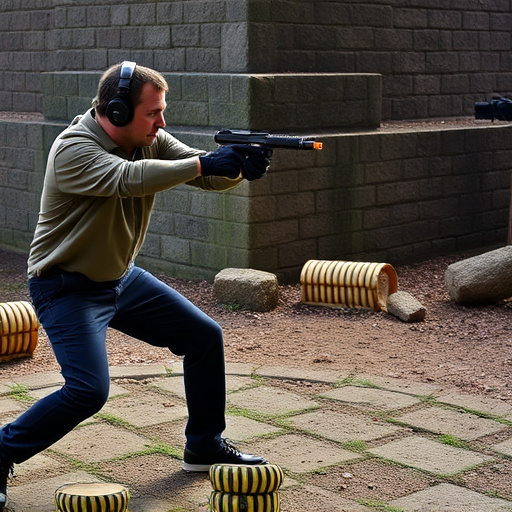Amperage is key in determining the effectiveness and safety of concealed stun gun flashlight combos, with higher amps delivering stronger shocks. These devices combine a stun gun and flashlight, offering discreet self-defense. Popular among modern carriers, they balance deterrence and injury risk, but proper training on amperage and power output is crucial to avoid harm. Ideal combos offer adjustable voltage, balanced range and amperage for safe, effective use, adhering to local laws as a last resort.
In today’s world, understanding self-defense options is crucial. The concealed stun gun flashlight combo has emerged as a popular choice for personal safety, offering both lighting and electric shock protection. This comprehensive guide delves into the intricacies of these devices, focusing on amperage—a key metric determining their effectiveness. We explore technical specifications, performance evaluation, legal considerations, and best practices, providing insights into how these powerful tools work and ensuring safe usage.
- Understanding Amperage in Electric Shock Weapons
- The Role of Stun Gun Flashlight Combinations
- Concealed Carry: Legal and Safety Considerations
- Technical Specifications: Amperage and Power Output
- Evaluating Performance: Effectiveness and Range
- Best Practices for Using a Stun Gun Flashlight Combo
Understanding Amperage in Electric Shock Weapons
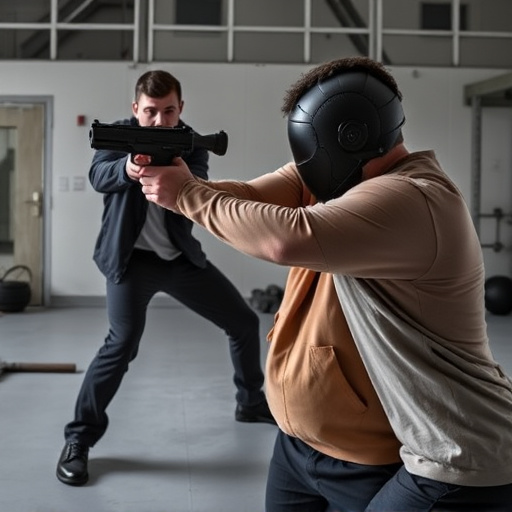
Understanding Amperage in Electric Shock Weapons
When it comes to electrical shock weapons, such as concealed stun gun flashlight combos, amperage plays a crucial role in determining their effectiveness and safety. Amperage, or current, is measured in units of amps and represents the flow of electric charge through a circuit. In the context of stun devices, higher amperage generally translates to more powerful shocks, which can incapacitate an attacker temporarily. However, it’s important to note that these weapons are designed for self-defense purposes and should be used responsibly to minimize risks of injury.
The amperage in a stun gun flashlight combo varies depending on the device’s design and intended use. Modern concealed carriers often opt for models with amperages ranging from 10,000 to 20,000 amps, which are sufficient to deter and control an assailant without causing serious harm. These devices deliver precise electrical currents through two prongs or contacts that make contact with the attacker’s body, disrupting muscle control and leading to a temporary loss of balance or strength. Understanding amperage helps users choose the right stun device for their needs while ensuring they remain within legal limits and use force only as a last resort.
The Role of Stun Gun Flashlight Combinations
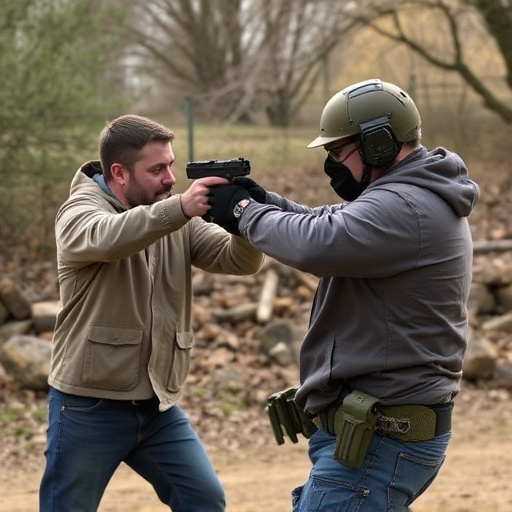
In recent years, the concept of combining a stun gun with a flashlight has gained traction among individuals seeking versatile self-defense options. This innovative approach offers dual functionality, transforming everyday tools into powerful defense mechanisms. A concealed stun gun flashlight combo is designed to provide users with an added layer of safety and convenience.
The integration of these two devices allows for easy identification as a potential threat deterrent. With the press of a button, individuals can switch between providing illumination and delivering a powerful electric shock. This versatility makes it an attractive choice for those who want a discreet yet effective self-defense solution, easily concealed in their pockets or purses.
Concealed Carry: Legal and Safety Considerations
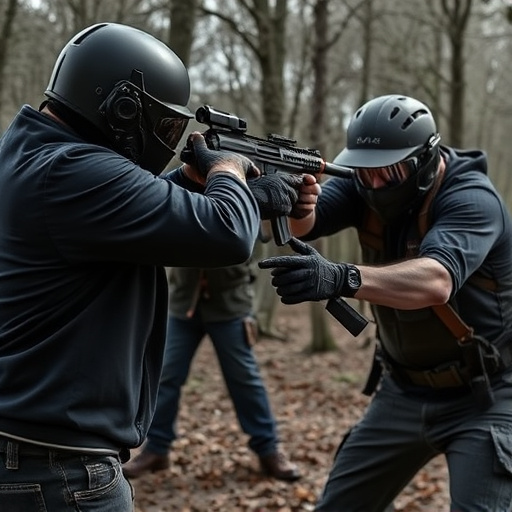
The concept of a concealed stun gun flashlight combo has sparked both interest and debate in recent years, particularly among those who prioritize personal safety. In many jurisdictions, the legal landscape surrounding concealed weapons, including stun devices, is evolving. This shift reflects a growing acknowledgment of the need for individuals to protect themselves in various settings.
However, as with any weapon, safety is paramount. Concealed carry permits should come with comprehensive training and understanding of the device’s amperage and usage. Stun guns deliver electric shocks that can temporarily incapacitate a target, but their effectiveness and potential risks depend on factors like voltage, current, and pulse width. Responsible ownership and handling are crucial to ensure that these tools serve as intended without causing undue harm or endangering bystanders.
Technical Specifications: Amperage and Power Output
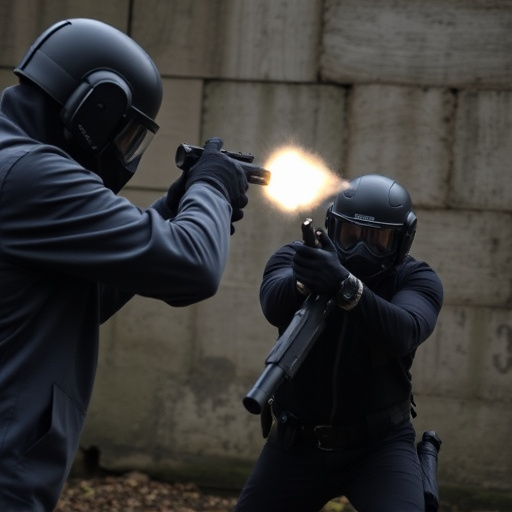
When it comes to understanding the capabilities of a concealed stun gun flashlight combo, one key technical specification to consider is amperage and power output. These devices are designed to deliver powerful electrical shocks for self-defense purposes, and the amperage value directly correlates with the intensity and effectiveness of the stun. Amperage refers to the flow of electric charge, measured in amps, that a stun device can produce upon activation.
The average concealed stun gun flashlight combo is capable of emitting a shock ranging from 50,000 to 150,000 amps. This high amperage level ensures that the device can quickly incapacitate an assailant by disrupting their neuromuscular system. The power output, often measured in volts, also plays a crucial role. A higher voltage indicates a more powerful electric discharge, capable of penetrating clothing and delivering a significant shock. Together, these technical specifications make concealed stun gun flashlights combos effective self-defense tools for individuals seeking personal safety.
Evaluating Performance: Effectiveness and Range
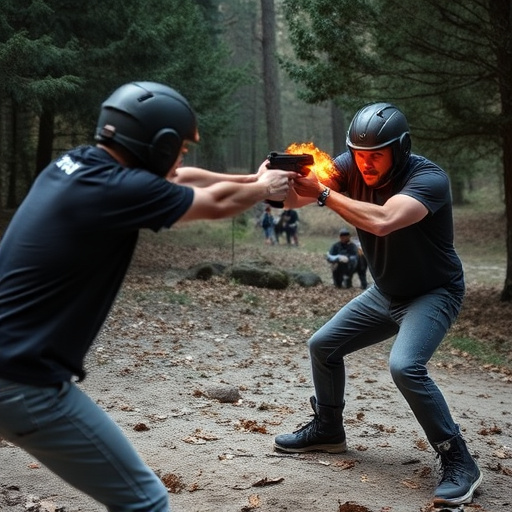
Evaluating the performance of a concealed stun gun flashlight combo involves assessing its effectiveness and range. The amperage, or electrical current, delivered by such devices plays a critical role in their efficacy as non-lethal self-defense tools. Higher amperages can incapacitate an assailant more quickly, but they require closer proximity for safe and effective use. The range of these devices is also crucial; longer ranges allow users to disable attackers from farther away, enhancing safety and response time.
A well-designed concealed stun gun flashlight combo should strike a balance between amperage and range. A higher amperage (measured in milliamps, or mA) ensures faster muscle contraction and temporary paralysis, while a suitable range (typically within 2-3 meters) allows for safe deployment without causing collateral damage to bystanders. Incorporating advanced features like adjustable voltage settings can further enhance both performance metrics, making the device versatile and effective under diverse circumstances.
Best Practices for Using a Stun Gun Flashlight Combo

When utilizing a concealed stun gun flashlight combo, safety and responsible usage are paramount. Always ensure you’re familiar with local laws regarding stun devices before carrying one. Only use it as a last resort when facing a threatening situation, and never point it at anyone unless you intend to deploy it. Regularly test the device’s functionality to guarantee its reliability in critical moments.
For optimal effectiveness, practice aiming and targeting techniques. The stun gun flashlight combo combines the power of a stun gun with the illumination of a high-lumen flashlight, allowing for both deterrence and visibility during low-light scenarios. Keep it readily accessible in a secure location, ensuring easy retrieval when needed. Regular maintenance, including battery checks and cleaning, is crucial to keep your concealed stun gun flashlight combo in top condition.
The concealed stun gun flashlight combo presents a powerful, multi-purpose self-defense solution. By understanding amperage and technical specifications, users can make informed decisions regarding their safety. These devices offer not only bright illumination but also effective stun capabilities, making them valuable tools for personal protection. However, it’s crucial to follow best practices and stay aware of legal considerations when carrying such a device for self-defense.
